Via Trajana was an ancient Roman road built during the reign of Emperor Trajan, connecting the Adriatic Sea to the Danube River. The road was constructed to facilitate the movement of troops and supplies during the Roman conquest of Dacia, a region that is now modern-day Romania. The road was an engineering marvel, with a length of 350 miles and a width of 26 feet, and was built to withstand the harsh weather conditions of the region.
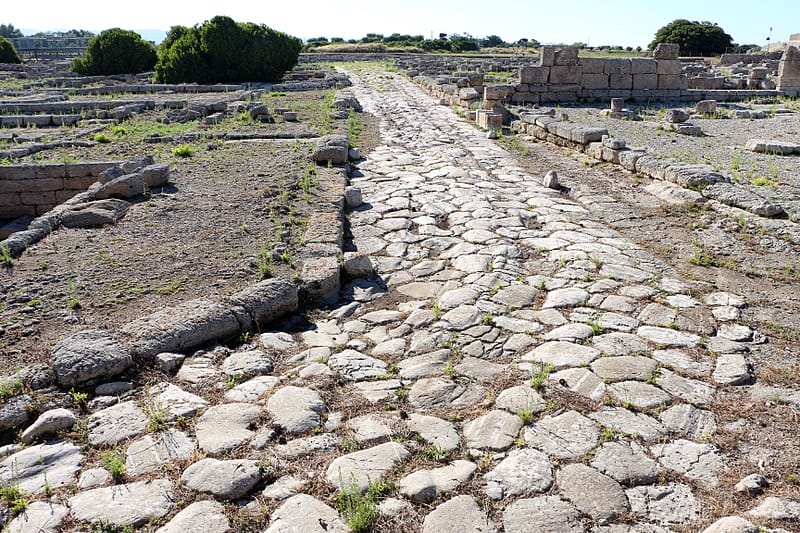
Source: Sailko, CC BY 3.0 https://creativecommons.org/licenses/by/3.0, via Wikimedia Commons
The historical significance of Via Trajana lies in the fact that it was a major artery for trade and commerce during the Roman Empire. It connected several major cities and settlements, including Ancona, Rome, and Beneventum, and played a vital role in the economic development of the region. The road also had a significant cultural impact, as it facilitated the spread of Roman culture and ideas to the regions it passed through.
Key Takeaways
- Via Trajana was an ancient Roman road built during the reign of Emperor Trajan, connecting the Adriatic Sea to the Danube River.
- The road played a vital role in the economic development of the region and facilitated the spread of Roman culture.
- The road connected several major cities and settlements, including Ancona, Rome, and Beneventum.
Historical Significance of Via Trajana
Via Trajana was a Roman road constructed under the reign of Emperor Trajan in the early 2nd century AD. He paid for the road from his own funds. The road was built to connect Beneventum (modern-day Benevento) in Campania with Brundisium (modern-day Brindisi) in Puglia.
Construction and Expansion
Via Trajana was constructed by the Roman army during Trajan’s military campaigns in the eastern provinces of the Roman Empire. The construction of Via Trajana was a significant engineering feat, as it had to traverse the rugged terrain of the Apennine Mountains. The road was built with a solid foundation of stone blocks and was paved with large slabs of stone to provide a smooth surface for travel.
Over time, Via Trajana became an important route for trade and commerce, connecting the regions of Campania and Puglia. The road was expanded and improved by subsequent emperors, including Hadrian and Antoninus Pius, who added new sections and made repairs to the existing road.
Military and Civil Utility
The construction of Via Trajana had significant military and civil utility. The road provided a secure and efficient means of transporting troops and supplies between the ports of Brundisium and Beneventum. This was especially important during times of war and civil unrest, such as the civil war between Septimius Severus and Pescennius Niger in the late 2nd century AD.
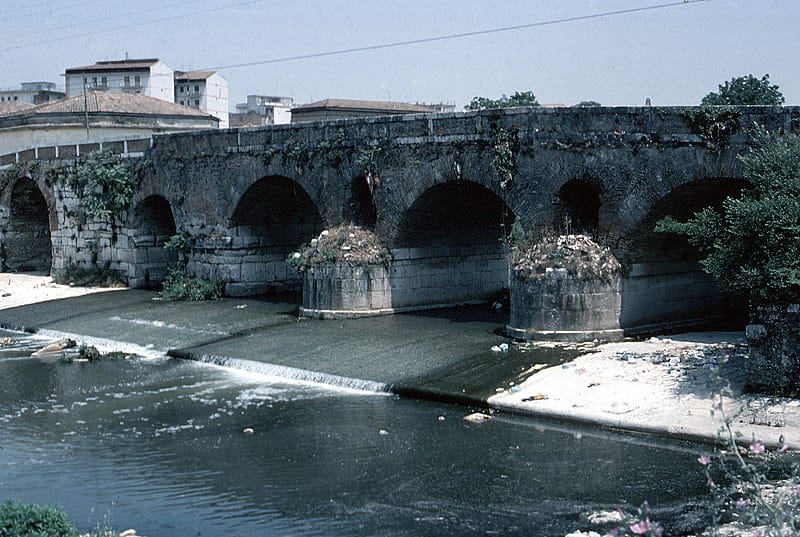
Source: Institute for the Study of the Ancient World from New York, United States of America, CC BY 2.0 https://creativecommons.org/licenses/by/2.0, via Wikimedia Commons
In addition to its military utility, Via Trajana also facilitated trade and commerce between the regions of Campania and Puglia. The road allowed for the transportation of goods such as olive oil, wine, and grain, which were produced in the fertile regions of Campania and transported to the ports of Brundisium for export.
Major Cities and Settlements
Bari and Brundisium
Bari and Brundisium were two major cities located along the route of Via Trajana. Bari, an ancient port city, was an important center of trade and commerce in the region. It was also a major cultural and religious center, with several important churches and monasteries located in and around the city.
Brundisium, on the other hand, was an important military and strategic center owing to its location at the southern end of the Appian Way. It was also an important port city, serving as a major gateway to the eastern Mediterranean.
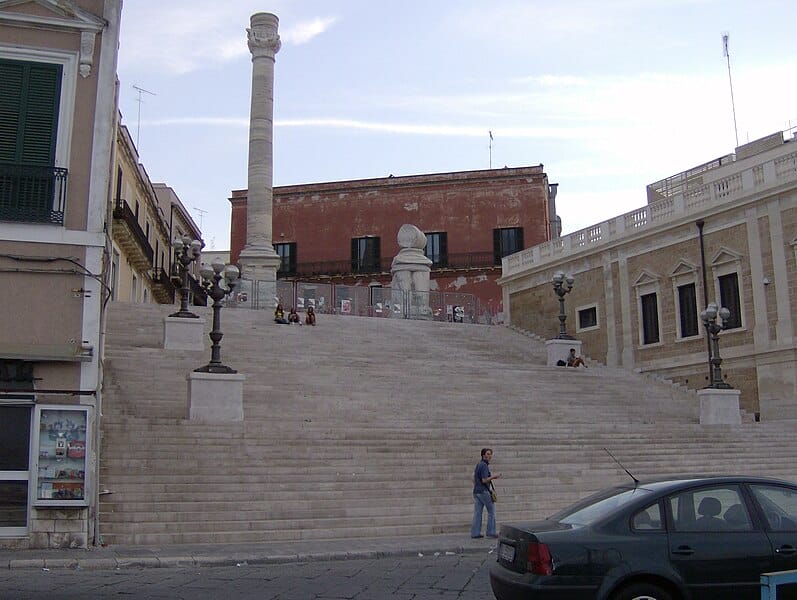
Via Trajana – Must Check Out
Trajan’s Column in Rome
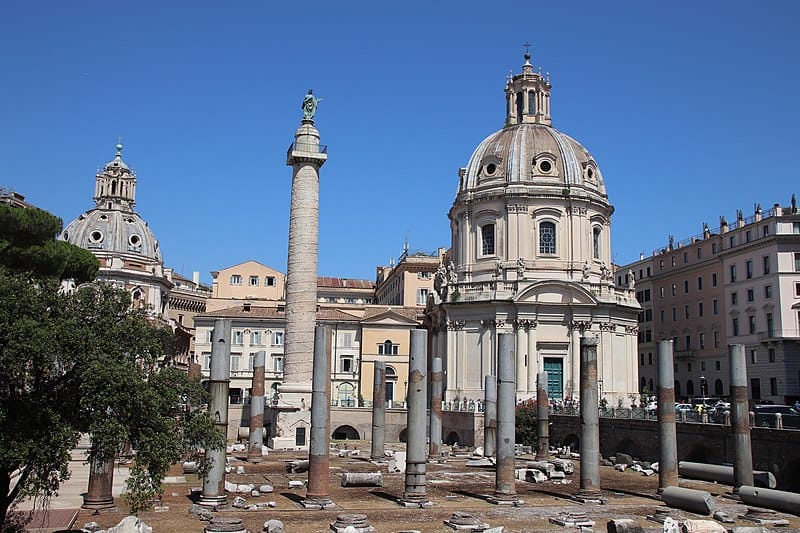
Trajan’s Column in Rome is a remarkable monument that depicts the victories of Emperor Trajan in the Dacian Wars. The column is a 98-foot-tall structure that stands in the center of Trajan’s Forum in Rome. It is adorned with intricate bas-reliefs that narrate the military campaigns of Trajan. The column has been a source of inspiration for artists, architects, and historians for centuries. Today, it is a popular tourist attraction and a symbol of Roman power and engineering.
The Forum of Trajan in Rome
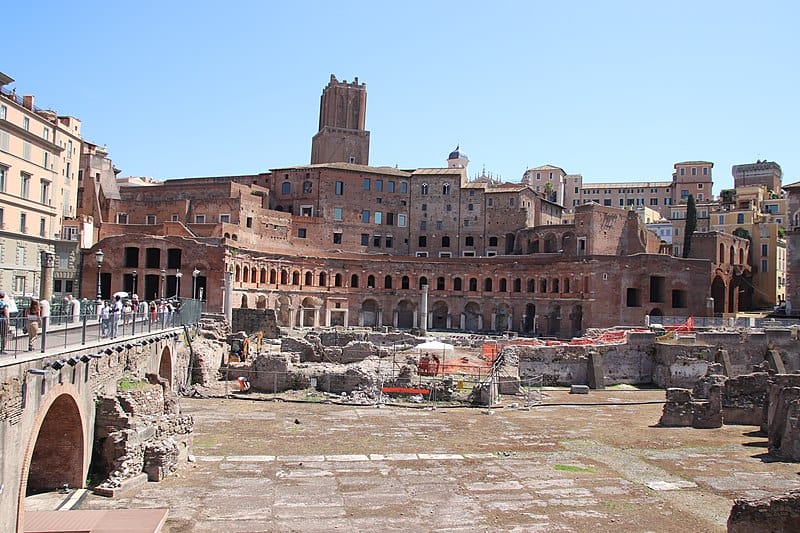
The Forum of Trajan in Rome was built by Emperor Trajan in the early 2nd century AD. It was the last and largest of the Imperial fora in Rome. The forum was a center of political, economic, and cultural activities in ancient Rome. It was adorned with magnificent buildings, statues, and fountains. Today, the ruins of the Forum are a popular tourist attraction and a testament to the grandeur of ancient Rome.
The Via Trajana Archaeological Route in Benevento
The road is dotted with archaeological sites, such as the Arch of Trajan and the Roman Theater of Benevento, which offer a glimpse into the rich cultural heritage of the region. This route is a perfect way to experience and understand everything Emperor Trajan built, its significance, and its lasting legacy.
The Archaeological Museum of Benevento
The Archaeological Museum of Benevento is a museum that showcases the archaeological treasures of the region. The museum houses a vast collection of artifacts, such as pottery, sculptures, and mosaics, that date back to the Roman, Samnite, and Lombard periods. The museum is a must-visit for anyone interested in the history and culture of southern Italy. Also known as the Museo Archeologico Nazionale del Sannio Caudino, this museum provides an in-depth look into the region’s rich archaeological and historical heritage, spanning from prehistoric times through the Roman period.
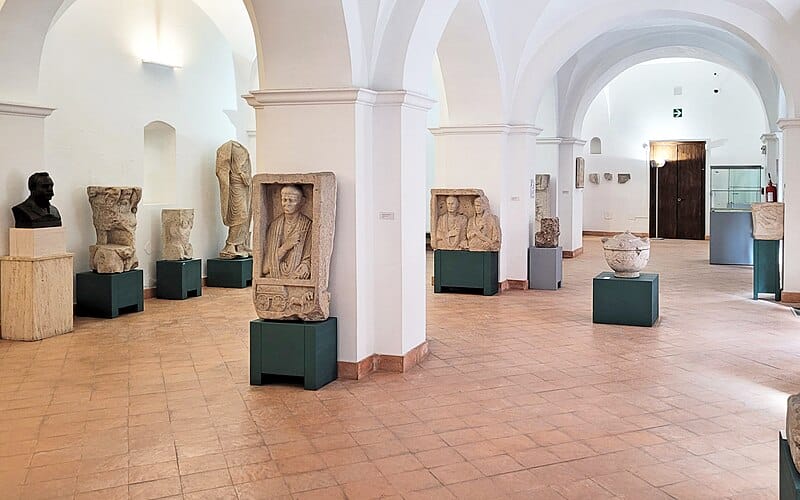
The museum is housed in the Palazzo dei Rettori, a historic building that once served as the residence of the local governor. The palace itself is an example of Italian Renaissance architecture, adding a historical dimension to the museum experience. The museum’s collection focuses on the archaeological finds from the Sannio Caudino region, which encompasses parts of ancient Samnium, an area known for its early settlements and later Roman influence.
The museum’s location in Benevento, a city with significant Roman ruins such as the Arch of Trajan and the Roman Theater, enhances its importance as a center for understanding the historical and archaeological significance of the region. It also contributes to regional tourism by attracting visitors interested in Roman history and archaeology.
The Roman Amphitheater of Benevento
The Roman Amphitheater of Benevento is an ancient arena that could seat up to 10,000 spectators and was used for gladiatorial contests, animal hunts, and public spectacles. Today, the amphitheater is a popular tourist attraction and a testament to the architectural prowess of ancient Rome. It was constructed under the rule of Emperor Hadrian or his successors, a period known for extensive urban development and architectural projects throughout the empire.
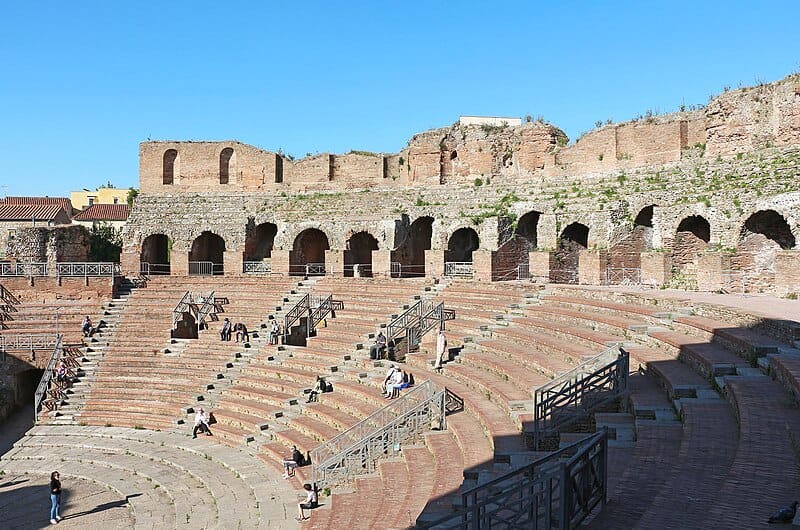
The amphitheater is located near the historical center of Benevento, taking advantage of the natural landscape to accommodate its large size. The site was strategically chosen to align with the city’s urban layout and its importance as a Roman center.
People Also Ask:
What is the historical significance of the Via Nova Traiana?
The Via Nova Traiana was a significant road built by the Roman Emperor Trajan in the 2nd century AD. It connected the port of Aila (modern-day Aqaba, Jordan) on the Red Sea to Bostra (modern-day Bosra, Syria) in the north. The road played a critical role in facilitating trade and commerce between the Roman Empire and the East.
How did the Via Trajana compare to other Roman roads in terms of construction and usage?
The Via Trajana was one of the many Roman roads built during the Roman Empire. It was constructed with a solid foundation of large stones, followed by several layers of gravel and smaller stones, and finally a layer of paving stones. The road was designed to be wide enough for two chariots to pass each other. In terms of usage, the Via Trajana was primarily used for military purposes, to transport troops and supplies across the Roman Empire.
What were the primary purposes of the Via Egnatia in the Roman Empire?
The Via Egnatia was an important road constructed by the Romans in the 2nd century BC. It connected the Adriatic Sea to the Aegean Sea, running through modern-day Albania, North Macedonia, and Greece. The road was built primarily for military purposes, to transport troops and supplies across the Roman Empire, and to facilitate trade and commerce between the East and the West.
Can you describe the route and key features of the Via Appia?
The Via Appia was one of the most important and famous roads built by the Romans. It connected Rome to Brindisi, a major port city on the Adriatic Sea. The road was built with a solid foundation of large stones, followed by several layers of gravel and smaller stones, and finally a layer of paving stones. The road was lined with tombs, monuments, and other significant landmarks, making it a popular tourist attraction.
What were the major cities connected by the Via Trajana?
The Via Trajana connected several major cities in the Roman Empire, including Aila (modern-day Aqaba, Jordan), Petra (modern-day Jordan), and Bostra (modern-day Bosra, Syria). The road is also connected to other major roads in the region, such as the Via Egnatia and the Via Appia.
How has the Via Trajana influenced modern road systems?
The Via Trajana and other Roman roads have had a significant impact on modern road systems. The Roman roads were built with a solid foundation and durable materials, which allowed them to withstand heavy use and weathering. Many modern roads still use similar construction techniques and materials, which have helped to improve their durability and lifespan. Additionally, the Roman roads helped to facilitate trade and commerce, which has had a lasting impact on the global economy.
Hello, my name is Vladimir, and I am a part of the Roman-empire writing team.
I am a historian, and history is an integral part of my life.
To be honest, while I was in school, I didn’t like history so how did I end up studying it? Well, for that, I have to thank history-based strategy PC games. Thank you so much, Europa Universalis IV, and thank you, Medieval Total War.
Since games made me fall in love with history, I completed bachelor studies at Filozofski Fakultet Niš, a part of the University of Niš. My bachelor’s thesis was about Julis Caesar. Soon, I completed my master’s studies at the same university.
For years now, I have been working as a teacher in a local elementary school, but my passion for writing isn’t fulfilled, so I decided to pursue that ambition online. There were a few gigs, but most of them were not history-related.
Then I stumbled upon roman-empire.com, and now I am a part of something bigger. No, I am not a part of the ancient Roman Empire but of a creative writing team where I have the freedom to write about whatever I want. Yes, even about Star Wars. Stay tuned for that.
Anyway, I am better at writing about Rome than writing about me. But if you would like to contact me for any reason, you can do it at contact@roman-empire.net. Except for negative reviews, of course. 😀
Kind regards,
Vladimir
